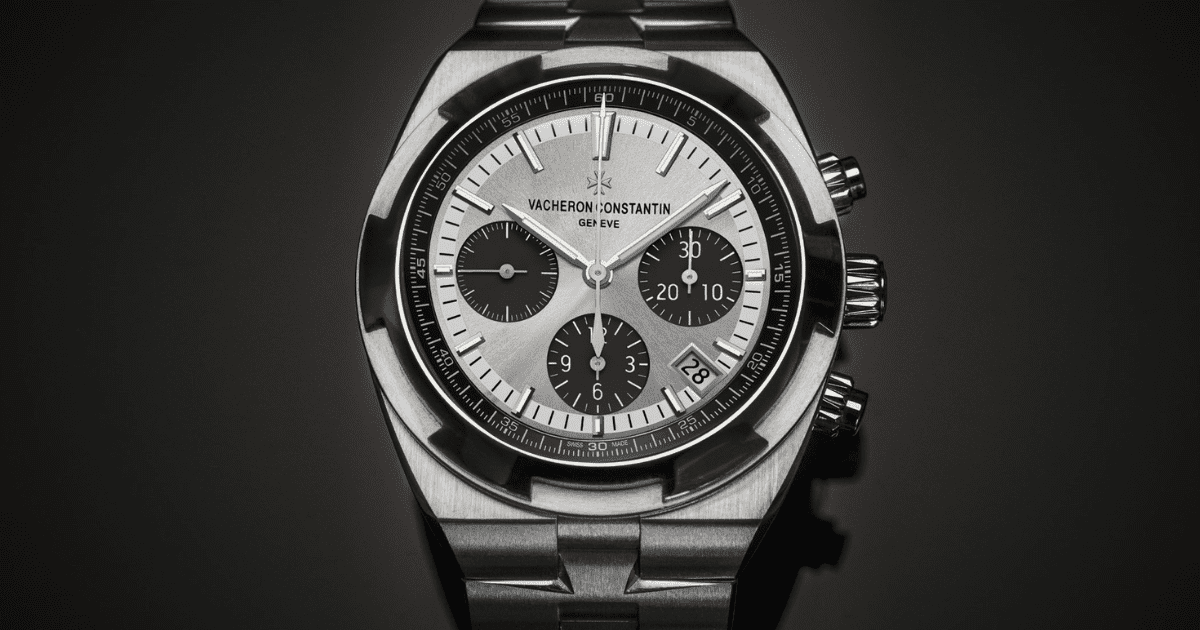Watch News
Audermars Piguet vs Piaget
The world of luxury watches is marked by craftsmanship, heritage, and innovation. Among the pantheon of prestigious watchmakers, Audemars Piguet and Piaget stand out for their unique contributions to horology. While both brands share a commitment to excellence, they cater to different tastes and offer distinct experiences. This blog delves into the histories, innovations, and iconic collections of Audemars Piguet and Piaget, providing an in-depth comparison of these two titans of the watchmaking world.
Historical Background
Audemars Piguet
Founded in 1875 in Le Brassus, Switzerland, by Jules Louis Audemars and Edward Auguste Piguet, Audemars Piguet has been synonymous with tradition and innovation for nearly 150 years. From the beginning, the brand focused on producing complex timepieces with sophisticated mechanisms. One of their earliest achievements was the creation of a minute repeater movement in 1892, showcasing their technical prowess.
Audemars Piguet’s commitment to innovation continued into the 20th century, with the introduction of the world’s first skeleton watch in 1934 and the development of the first perpetual calendar wristwatch in 1955. However, it was in 1972 that Audemars Piguet made a significant mark on the industry with the launch of the Royal Oak, the first luxury sports watch crafted in stainless steel. Designed by the legendary Gérald Genta, the Royal Oak broke conventions and redefined luxury watch design.
Piaget
Piaget’s journey began in 1874 in La Côte-aux-Fées, Switzerland, when Georges-Édouard Piaget established a workshop on his family farm, initially producing high-precision movements for other watch brands. It wasn’t until the mid-20th century that Piaget began creating timepieces under its own name, focusing on ultra-thin movements and luxurious designs.
In 1957, Piaget introduced the Caliber 9P, one of the thinnest mechanical movements ever made, measuring just 2 mm thick. This achievement cemented Piaget’s reputation as a master of ultra-thin watchmaking. Throughout the 1960s and 1970s, Piaget expanded its portfolio to include high-jewelry watches, incorporating vibrant hard stones and exquisite craftsmanship.
Design Philosophy and Aesthetic
Audemars Piguet
Audemars Piguet’s design philosophy is grounded in blending traditional watchmaking techniques with avant-garde aesthetics. The Royal Oak is a prime example, featuring an octagonal bezel secured with visible screws, an integrated bracelet, and a “Tapisserie” patterned dial. The bold, industrial design of the Royal Oak challenged the conventions of luxury watches and remains a timeless icon.
Beyond the Royal Oak, Audemars Piguet continues to innovate with collections like the Royal Oak Offshore, a more robust and sporty iteration, and the Code 11.59, which combines classic and contemporary elements. The brand’s focus on detailed craftsmanship and high-quality finishing is evident in every timepiece, ensuring a perfect balance between form and function.
Piaget
Piaget is renowned for its elegance, sophistication, and innovation in ultra-thin watchmaking. The brand’s designs often feature minimalist aesthetics, with an emphasis on sleek lines and refined details. The Altiplano collection epitomizes Piaget’s mastery of ultra-thin movements, with its clean, understated dials and slim profiles.
In addition to its prowess in technical watchmaking, Piaget excels in the realm of high-jewelry watches. The Possession and Limelight Gala collections showcase the brand’s ability to blend horology with jewelry artistry, often incorporating precious stones, intricate settings, and vibrant colors. Piaget’s designs are a celebration of beauty, precision, and timeless elegance.
Technical Innovations
Audemars Piguet
Audemars Piguet has consistently pushed the boundaries of watchmaking with its technical innovations. The brand’s expertise in complications is unparalleled, with significant achievements in perpetual calendars, minute repeaters, and chronographs. The Royal Oak Offshore Grand Complication, for example, features a minute repeater, split-seconds chronograph, and perpetual calendar, demonstrating the brand’s technical virtuosity.
The development of high-frequency movements is another area where Audemars Piguet excels. The Royal Oak Concept Supersonnerie, introduced in 2016, represents a breakthrough in acoustic performance, delivering a remarkably clear and powerful chime. This innovation reflects Audemars Piguet’s dedication to advancing the art and science of watchmaking.
Piaget
Piaget’s technical innovations are primarily focused on achieving ultra-thin movements and integrating haute joaillerie techniques. The brand’s mastery in creating slim timepieces is exemplified by the Altiplano Ultimate Concept, unveiled in 2018, which holds the record for the thinnest mechanical watch ever made at just 2 mm thick. This feat required reimagining traditional watch components and materials to achieve an unprecedented level of thinness.
In addition to ultra-thin movements, Piaget is known for its creative use of materials and decorative techniques. The incorporation of hard stones such as lapis lazuli, jade, and onyx into watch dials is a hallmark of Piaget’s design, adding a unique and luxurious touch to their timepieces. Piaget’s ability to blend technical innovation with artistic expression sets it apart in the world of haute horlogerie.
Iconic Collections
Audemars Piguet
- Royal Oak: Launched in 1972, the Royal Oak is arguably Audemars Piguet’s most iconic collection. Its distinctive design, characterized by the octagonal bezel and integrated bracelet, revolutionized the watch industry. The Royal Oak has since evolved into various models, including the Royal Oak Offshore and the Royal Oak Concept, each adding new dimensions to the original design.
- Royal Oak Offshore: Introduced in 1993, the Royal Oak Offshore is a bolder, more robust version of the Royal Oak, designed for sports and adventure. Its larger case size, prominent pushers, and enhanced water resistance make it a favorite among sports watch enthusiasts.
- Code 11.59: Launched in 2019, the Code 11.59 collection represents Audemars Piguet’s vision for the future of watchmaking. Combining classic and contemporary design elements, the collection features complex case structures, innovative calibers, and modern aesthetics, appealing to a new generation of watch collectors.
Piaget
- Altiplano: The Altiplano collection epitomizes Piaget’s expertise in ultra-thin watchmaking. Renowned for its minimalist design and elegant proportions, the Altiplano showcases the brand’s dedication to precision and refinement. The collection includes both manual and automatic movements, as well as high-jewelry models adorned with precious stones.
- Piaget Polo: Introduced in 1979, the Piaget Polo collection is a sporty yet sophisticated line of watches designed for an active lifestyle. The Polo’s distinctive cushion-shaped case and integrated bracelet make it instantly recognizable. The collection has evolved over the years, incorporating modern design elements and advanced movements.
- Limelight Gala: The Limelight Gala collection exemplifies Piaget’s fusion of watchmaking and jewelry artistry. With its asymmetrical lugs, gem-set bezels, and refined dials, the Limelight Gala is a celebration of femininity and elegance. The collection includes a range of models, from simple yet chic designs to elaborate high-jewelry creations.
Market Position and Target Audience
Audemars Piguet
Audemars Piguet’s market position is firmly rooted in the luxury sports watch segment, with the Royal Oak serving as the brand’s flagship model. The brand appeals to collectors and enthusiasts who appreciate bold design, technical sophistication, and a rich heritage. Audemars Piguet’s timepieces are often seen as statements of style and success, making them popular among high-net-worth individuals, celebrities, and athletes.
Piaget
Piaget occupies a unique niche at the intersection of haute horlogerie and haute joaillerie. The brand’s ultra-thin watches and high-jewelry timepieces cater to connoisseurs who value elegance, craftsmanship, and artistic expression. Piaget’s clientele includes discerning individuals who seek both technical excellence and aesthetic beauty in their watches. The brand’s emphasis on luxury and refinement makes it a favorite among those with a taste for sophisticated and distinctive timepieces.
Conclusion
In the world of luxury watches, Audemars Piguet and Piaget each offer a distinct experience, reflecting their unique histories, philosophies, and innovations. Audemars Piguet’s legacy is built on a foundation of technical prowess and avant-garde design, epitomized by the iconic Royal Oak. Piaget, on the other hand, is celebrated for its mastery of ultra-thin movements and the seamless integration of watchmaking and jewelry artistry.
Choosing between Audemars Piguet and Piaget ultimately depends on personal preference and what one values most in a timepiece. Whether it’s the bold, industrial elegance of Audemars Piguet or the refined, artistic craftsmanship of Piaget, both brands represent the pinnacle of Swiss watchmaking and offer exceptional watches that stand the test of time.








